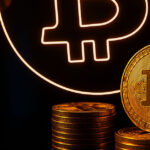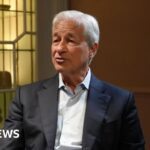Gold prices have surged past the $4,000-per-ounce mark this week, marking a significant 51% increase since the beginning of the year. This spike is reminiscent of historical trends, particularly the dramatic 126% increase observed in 1979, a time characterized by stagflation, fuel shortages, and foreign-policy challenges during President Jimmy Carter’s administration.
Typically, such steep rises in gold prices signal investor anxiety. Gold is often viewed as a safe haven for capital amidst turbulent financial conditions. This surge, however, comes at a time when the U.S. economy has experienced consecutive quarters of nearly 4% growth, and the stock market is reaching all-time highs. This apparent contradiction raises questions about the underlying causes of investor sentiment toward gold.
The potential impact of current government policies cannot be overlooked. President Donald Trump’s administration has implemented various economic strategies, including deregulation, tax cuts, and energy policies, which seem to have a more pronounced positive effect on the economy than the adverse effects from recent tariffs.
Interestingly, Trump’s comments regarding the U.S. dollar might be influencing market behavior. In July, he suggested that a strong dollar might only benefit inflation while harming tourism and exports. His confrontational stance toward the Federal Reserve could also be contributing to market volatility, as investors speculate that the Fed may be forced to lower interest rates more aggressively, leading to concerns about rising inflation.
Further complicating the economic landscape are international uncertainties that could prompt a reaction from central banks globally. Additionally, fears surrounding a potential collapse of the burgeoning artificial intelligence sector add another layer of risk for investors.
Political discord in Washington is also a significant factor. With the federal debt surpassing $37 trillion and ongoing disputes about government spending—particularly Democrats’ demands for $1.5 trillion in new, unfunded expenditures—there are rising concerns about fiscal responsibility.
While the reasons behind gold’s recent price surge remain unclear, it signals a need for careful scrutiny of current economic and political strategies. Observers suggest that the administration should reconsider its rhetoric around the dollar, especially in light of a robust economy, and that Republican lawmakers should remain firm against what some perceive as irresponsible spenders in Congress. Investors, analysts, and policymakers alike will be closely monitoring these developments in the coming months.







